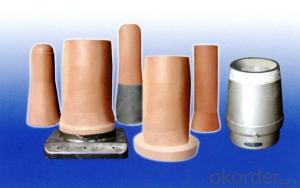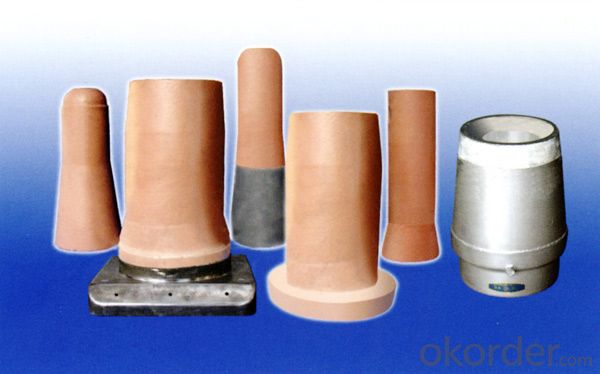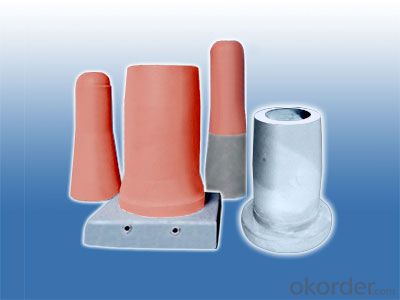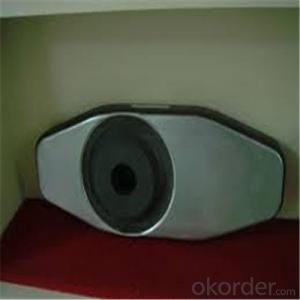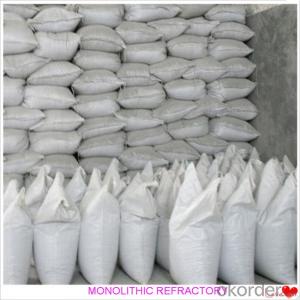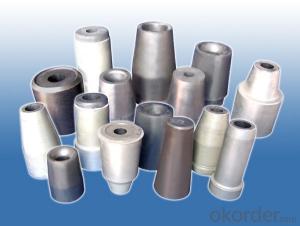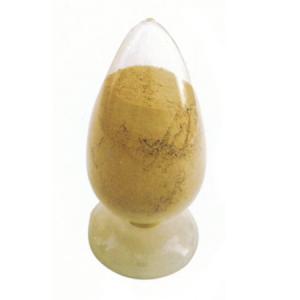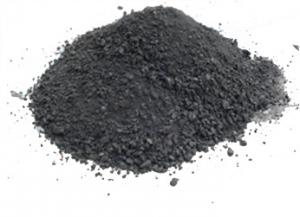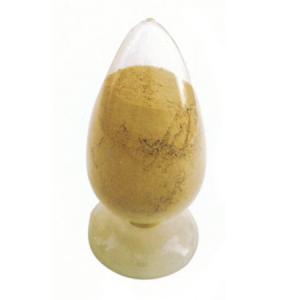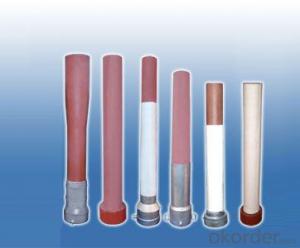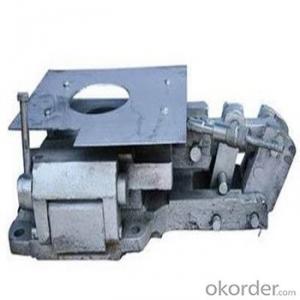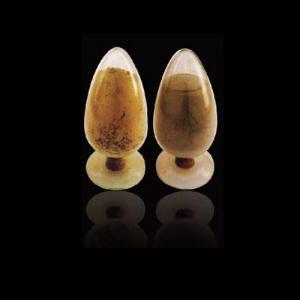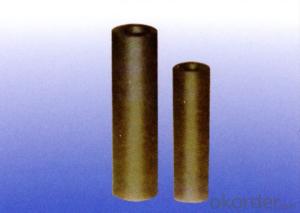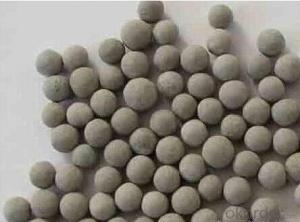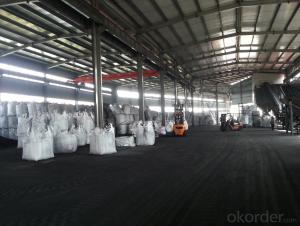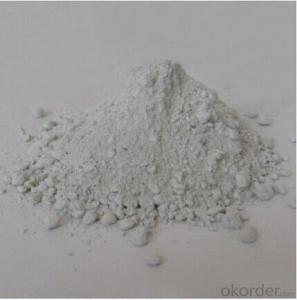Monolithic Refractories for Iron and Steel Industry - Refractory Tundish Upper Nozzle and Collect Nozzle
- Loading Port:
- Shanghai
- Payment Terms:
- TT OR LC
- Min Order Qty:
- 10 set
- Supply Capability:
- 50000 set/month
OKorder Service Pledge
OKorder Financial Service
You Might Also Like
Description:
Steelmaking tundish upper nozzle is an kind of quickchange nozzle,used together with tundish collect nozzle which produced by topcahse, with high purity zr 95% for steel continuous casting process
tundish nozzle is one kind of refractory alumina-zirconia-cartbon brick which are used for control the molten
steel in steel casting .we called is composite zirconia tundish nozzle
| Al2O3 % | Fe2O3 % | SiO2 % | TiO2 % | ZrO2 % | CaO % | MgO % | LOI % | Density g/cm³ | Proosity | fraclure strength Mpa | Application | |
| Body | 53.28 | 0.91 | 14.48 | 1.41 | 30.59 | 2.42 | 14.3 | 8.4 | general | |||
| Bowl struclure | 86.61 | 0.43 | 0.77 | 0.33 | 11.11 | 2.85 | 17.7 | 6.73 | general | |||
| Bowl struclure | 71.43 | 0.91 | 10.65 | 10.95 | 2.78 | 16.3 | 14.5 | Bowl struclure with serious corrosion | ||||
| Body | 63.15 | 1.51 | 6.83 | 0.87 | 3.25 | 22.13 | 2.6 | 16.24 | 8.67 | Inner part with serious corrosion | ||
| Liner | 64.1 | 0.81 | 4.06 | 4.94 | 0.12 | 0.32 | 22.5 | 2.4 | 16.7 | 7.2 | General anti-blocking | |
| Liner | 0.55 | 4.65 | 52 | 19.2 | 0.3 | 22.3 | 2.45 | 16.3 | 8.6 | High standard anti-blocking | ||
| Liner | 52.9 | 13.9 | 0.07 | 21 | 12.1 | 2.51 | 18.71 | 6 | Low carbon | |||
| Bowl struclure | 15.1 | 8.95 | 0.29 | 1.56 | 56.8 | 17.3 | 2.59 | 16.7 | 7.8 | Slag Containing |
Manufacturing and QC
1.Raw materials blending
Independent raw materials blending center to assurestrict control of materials quality.
2.Shaping
Isostatic pressing technoloty,with as 1000 tons of pressure to assure the homogenous bulk density of each product.
3.Machining
To assure the uniform shape,dimension and dimension tolerance of each product.
4.X-ray defect inspection
To assure all products supplied to our customers without any defect and to prevent the un-countable feconomic loss for our customers.
5.Physical and chemistry analysis
To assure all products meet the physical and chemistry characteristics.
6.Packaging
The world-class for packaging to assure the safety transportation.
- Q: How do monolithic refractories withstand the chemical attacks in copper smelting applications?
- Monolithic refractories have the ability to withstand chemical attacks in copper smelting applications due to their unique properties and composition. These refractories are specifically designed to resist the harsh and corrosive environment found in copper smelting processes. Firstly, monolithic refractories are made from high-quality materials such as alumina, silica, and magnesia, which have high melting points and are chemically stable. These materials are carefully selected to ensure they can withstand the corrosive effects of copper smelting, such as the presence of sulfur compounds and acidic gases. The refractory's composition also includes various additives and bonding agents that enhance its resistance to chemical attacks. Additionally, monolithic refractories have excellent thermal shock resistance, meaning they can withstand rapid temperature changes without cracking or spalling. In copper smelting applications, the extreme temperatures involved can cause thermal stress on the refractory lining. The refractories' ability to withstand these temperature fluctuations is crucial in preventing the formation of cracks and ensuring their long-term performance. Furthermore, monolithic refractories have a dense and compact structure, which provides an effective barrier against the penetration of molten copper and other corrosive substances. This dense structure prevents the chemical attacks from penetrating the refractory lining, thus ensuring its durability and longevity. Moreover, monolithic refractories offer superior erosion resistance, which is essential in copper smelting applications where high-velocity gases and molten metal flows can cause erosion of the refractory lining. The refractory's erosion resistance prevents the degradation of the lining and maintains its structural integrity. Overall, monolithic refractories are specially designed to withstand the chemical attacks encountered in copper smelting applications. By utilizing high-quality materials, incorporating additives, and possessing excellent thermal shock resistance, density, and erosion resistance, these refractories provide a reliable and durable lining that can withstand the harsh conditions of copper smelting processes.
- Q: How are monolithic refractories used in the repair and maintenance of ladle and tundish covers?
- Monolithic refractories are used in the repair and maintenance of ladle and tundish covers by providing a durable and heat-resistant lining. These refractories are applied as a single, seamless layer, eliminating the need for multiple bricks or tiles. They can be easily shaped and molded to fit the specific contour of the ladle or tundish cover, ensuring a tight and secure seal. Monolithic refractories also offer excellent thermal insulation properties, preventing heat loss and reducing energy consumption. Additionally, they have high resistance to thermal shock and chemical corrosion, extending the lifespan of the ladle and tundish covers and minimizing the need for frequent repairs.
- Q: How are monolithic refractories used in the repair and maintenance of ladle and tundish linings?
- Monolithic refractories are used in the repair and maintenance of ladle and tundish linings by providing a durable and heat-resistant material that can withstand the harsh conditions of molten metal handling. These refractories are applied as a single, continuous lining, eliminating the need for individual bricks or tiles, which simplifies the repair and maintenance process. They can be easily shaped and installed in the desired areas, allowing for efficient repair of damaged sections. Monolithic refractories also offer excellent resistance to thermal shock, erosion, and corrosion, ensuring the longevity and reliability of ladle and tundish linings.
- Q: How do monolithic refractories withstand thermal shock and mechanical stress?
- Monolithic refractories are engineered to withstand high temperatures and harsh working conditions, making them ideal for applications that involve thermal shock and mechanical stress. Firstly, monolithic refractories are designed with a high thermal conductivity, which allows them to quickly absorb and distribute heat. This property helps to minimize thermal gradients within the material, reducing the risk of thermal shock. When exposed to sudden temperature changes, the refractory material expands and contracts uniformly, preventing cracks and fractures from forming. Secondly, these refractories have excellent thermal shock resistance due to their low thermal expansion coefficient. This means that they have a minimal tendency to expand or contract when subjected to temperature fluctuations. As a result, they can withstand rapid changes in temperature without experiencing significant structural damage. Furthermore, monolithic refractories possess high mechanical strength, enabling them to withstand various types of mechanical stress. They are formulated with carefully selected raw materials and additives that enhance their load-bearing capacity and resistance to mechanical forces. This enables them to withstand the weight of the surrounding materials, as well as any external forces or vibrations that may be present in the application environment. Moreover, monolithic refractories have good structural integrity and stability, thanks to their dense and compact microstructure. These materials are typically formed by a combination of fine powders, binders, and additives, which are mixed and shaped to create a solid, cohesive structure. This structure provides resistance against mechanical stress, preventing the refractories from crumbling or disintegrating under pressure. In summary, monolithic refractories withstand thermal shock and mechanical stress through their high thermal conductivity, low thermal expansion coefficient, robust mechanical strength, and structural integrity. These properties make them reliable and durable materials for applications requiring resistance to extreme temperatures and challenging operating conditions.
- Q: Can monolithic refractories be used for the lining of blast furnace runners and troughs?
- Yes, blast furnace runners and troughs can have their lining done with monolithic refractories. Monolithic refractories, unlike traditional refractory bricks that are made by assembling individual units, are composed of a single, homogeneous structure. There are several advantages to using monolithic refractories for lining blast furnace runners and troughs. Firstly, they exhibit excellent thermal shock resistance, which is vital in this application given the extreme temperature fluctuations the lining is exposed to. Additionally, monolithic refractories have a good resistance to chemical attack from the molten metal and slag, which helps prolong the lining's lifespan in the harsh working environment of blast furnaces. Moreover, monolithic refractories can be easily installed in intricate shapes and structures, allowing for greater flexibility in designing the lining of blast furnace runners and troughs. This ease of installation also results in reduced downtime during maintenance and repair, as monolithic refractories can be applied quickly and efficiently. To summarize, monolithic refractories are a suitable option for lining blast furnace runners and troughs due to their thermal shock resistance, chemical resistance, and easy installation. Their use can contribute to improving the longevity and performance of these critical components in blast furnace operations.
- Q: Can monolithic refractories be used for lining iron and steel ladles during casting and pouring?
- Yes, when it comes to lining iron and steel ladles during casting and pouring, monolithic refractories are the go-to option. Unlike traditional refractory bricks, which consist of multiple pieces, monolithic refractories are composed of a single, uniform structure. Monolithic refractories are highly favored for ladle lining in iron and steel casting due to their numerous advantages. Firstly, they exhibit exceptional resistance to thermal shock, enabling them to endure the intense temperatures encountered during casting and pouring. This is of utmost importance since ladles are constantly exposed to extreme heat. Moreover, monolithic refractories provide superior resistance to erosion and corrosion, ensuring that the lining remains intact amidst the harsh conditions and chemical reactions that transpire when molten metal makes contact with the ladle. Additionally, they possess excellent thermal insulation properties, diminishing heat loss and enhancing energy efficiency throughout the casting process. Furthermore, monolithic refractories boast remarkable versatility, enabling easy installation, repair, and replacement. They can be molded and shaped to conform to the specific requirements of ladles, resulting in a snug and secure lining. This adaptability also enables swift maintenance and repair, minimizing downtime and optimizing productivity. In conclusion, monolithic refractories are the perfect choice for lining iron and steel ladles during casting and pouring. Their resistance to thermal shock, erosion and corrosion, thermal insulation properties, and ease of installation render them highly suitable for this demanding application.
- Q: What are some common maintenance practices for monolithic refractories in iron and steel furnaces?
- There are several common maintenance practices for monolithic refractories in iron and steel furnaces: 1. It is essential to conduct regular inspections. Trained professionals should inspect the refractories to identify any potential issues, such as wear, erosion, or damage. 2. Promptly repairing and patching damaged or eroded areas is crucial to maintain the integrity of the refractories. Refractory mortars or castable refractories can be used for this purpose. 3. Regularly cleaning the refractory lining is important to remove any build-up of impurities that can affect performance. Mechanical cleaning with brushes or scrapers, as well as chemical cleaning with acids, can be employed. 4. Controlled thermal cycling is often performed to condition and strengthen the refractories. Gradually increasing and decreasing the furnace temperature improves their resistance to thermal shock. 5. Applying protective coatings or sealants to the refractory lining enhances its resistance to chemical attack, erosion, and thermal cycling. These act as barriers against molten metals or slags. 6. Monitoring and controlling operating conditions inside the furnace, such as temperature, pressure, and atmosphere, is crucial. This helps prevent sudden changes that may negatively affect the refractories. 7. Regular training and education for furnace operators and maintenance personnel are crucial. This ensures they understand the importance of proper refractory maintenance, reducing the risk of premature failure. Implementing these maintenance practices significantly prolongs the lifespan of monolithic refractories in iron and steel furnaces. It maximizes their performance, leading to improved efficiency and cost-effectiveness in the production process.
- Q: How do monolithic refractories withstand thermal cycling in the iron and steel industry?
- Monolithic refractories are designed to withstand thermal cycling in the iron and steel industry due to their unique composition and properties. These refractories are made from a single, continuous material, unlike traditional refractory bricks that are made by stacking individual bricks together. One of the main reasons monolithic refractories are able to withstand thermal cycling is their ability to expand and contract without cracking or damage. This is due to their high thermal shock resistance, which is a measure of their ability to withstand rapid temperature changes. Monolithic refractories are specially formulated to have low thermal conductivity, allowing them to resist the transfer of heat and minimize thermal gradients within the material. In addition, monolithic refractories have excellent thermal stability, which means they can maintain their structural integrity and mechanical strength even at high temperatures. This is crucial in the iron and steel industry, where temperatures can reach extreme levels. The refractories are able to withstand repeated heating and cooling cycles without undergoing significant structural changes or degradation. Furthermore, monolithic refractories have good corrosion resistance, which is important in an environment where they come into contact with molten metal and various chemical agents. Their composition and special additives help to protect the refractory material from chemical attack, preventing erosion and prolonging their lifespan. The manufacturing process of monolithic refractories allows for easy installation and repair, as they can be applied as a liquid or a semi-liquid mixture. This reduces the risk of joints or weak points that could lead to thermal stress or failure during thermal cycling. Overall, the combination of high thermal shock resistance, low thermal conductivity, excellent thermal stability, corrosion resistance, and easy installation makes monolithic refractories highly durable and capable of withstanding the severe thermal cycling conditions in the iron and steel industry.
- Q: What are the common applications of monolithic refractories in blast furnaces?
- Monolithic refractories are commonly used in blast furnaces for various applications such as lining and repairing the hearth, taphole, and slag line, as well as for hot repairs and maintenance. These refractories provide high-temperature resistance, erosion and corrosion resistance, and thermal shock resistance, thereby ensuring the efficient and reliable operation of blast furnaces in the iron and steel industry.
- Q: How do monolithic refractories contribute to reducing downtime in iron and steel plants?
- Monolithic refractories play a crucial role in reducing downtime in iron and steel plants by offering several key advantages over traditional brick refractories. Firstly, monolithic refractories are highly versatile and can be easily molded and installed, allowing for quicker repairs and replacements. Unlike brick refractories that require time-consuming and labor-intensive processes, such as bricklaying and mortar application, monolithic materials can be directly applied in a castable or gunning form, significantly reducing the downtime required for repairs. Additionally, monolithic refractories provide better thermal insulation and improved resistance to thermal shocks, which are common occurrences in iron and steel plants. This enhanced thermal performance helps to maintain stable operating temperatures and prevents sudden temperature fluctuations that can lead to refractory failure and subsequent downtime. By minimizing these thermal shocks, monolithic refractories increase the overall lifespan of the refractory lining, reducing the need for frequent repairs and replacements. Furthermore, monolithic refractories offer superior chemical resistance compared to traditional brick refractories. Iron and steel plants often encounter aggressive chemical environments due to the presence of molten metal, slag, and other corrosive substances. Monolithic refractories are specifically designed to withstand these harsh conditions, preventing chemical attacks and erosion of the refractory lining. As a result, the need for unscheduled shutdowns due to refractory degradation is significantly reduced. Lastly, monolithic refractories provide better dimensional stability, minimizing the risk of cracks and spalling that can occur due to thermal cycling and mechanical stress. This increased resistance to wear and tear ensures that the refractory lining remains intact for a longer period, reducing the frequency of maintenance and enhancing the overall operational efficiency of the iron and steel plant. In summary, monolithic refractories contribute to reducing downtime in iron and steel plants by offering faster installation, improved thermal insulation, superior chemical resistance, and enhanced dimensional stability. Their versatility and performance advantages make them a reliable choice for maintaining a reliable and efficient refractory lining, ultimately reducing the frequency and duration of plant shutdowns.
Send your message to us
Monolithic Refractories for Iron and Steel Industry - Refractory Tundish Upper Nozzle and Collect Nozzle
- Loading Port:
- Shanghai
- Payment Terms:
- TT OR LC
- Min Order Qty:
- 10 set
- Supply Capability:
- 50000 set/month
OKorder Service Pledge
OKorder Financial Service
Similar products
Hot products
Hot Searches
Related keywords
